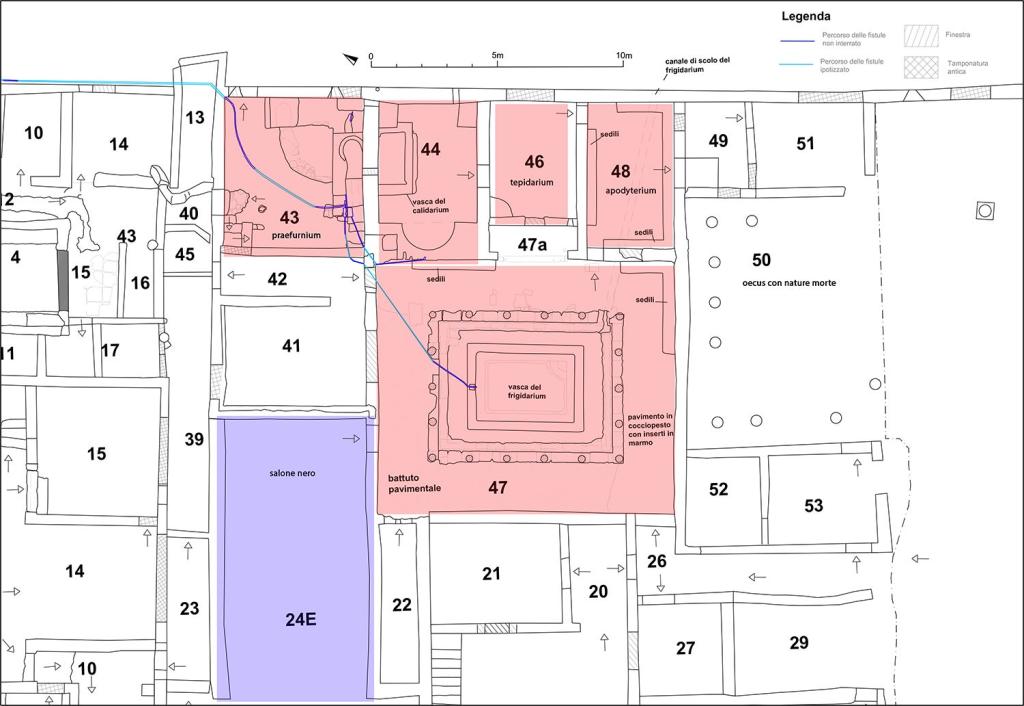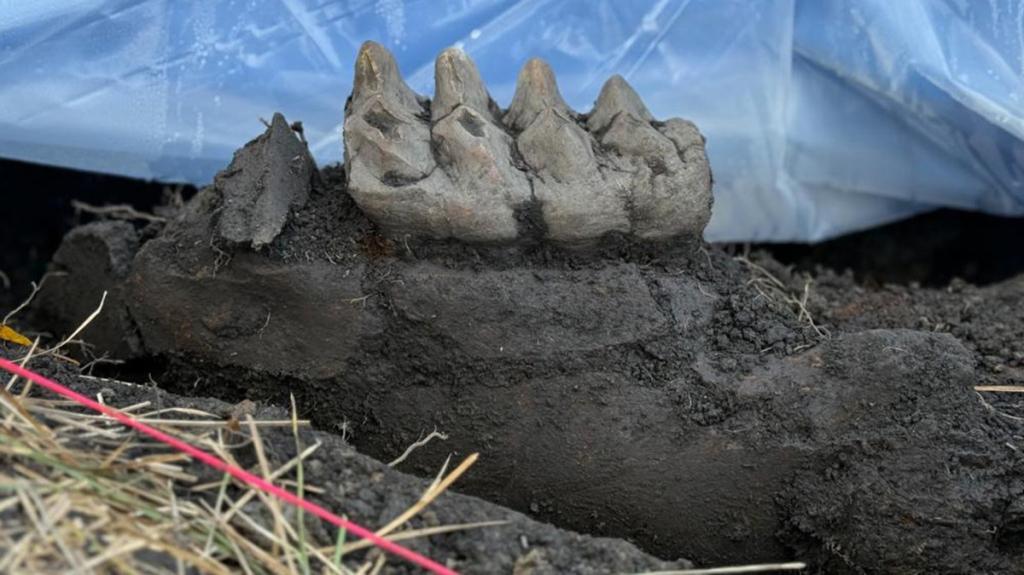Ancient Pompeii Bathhouse Reveals Elite Roman Lifestyle
Explore the opulent bathhouse of Pompeii, where elite Romans intertwined politics, culture, and leisure in luxurious, socially vibrant gatherings.
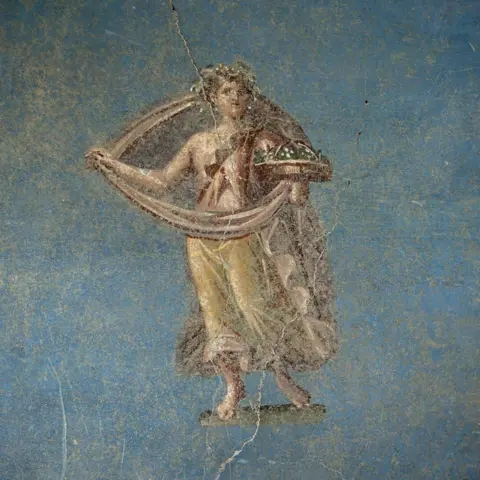
Key Points
- The newly discovered bathhouse in Pompeii
illustrates the luxurious lifestyle of the elite, equipped to host lavish gatherings for social and political purposes.
- This complex featured hot, warm, and cold rooms, facilitating relaxation before extravagant banquets that showcased wealth and power.
- The connection between bathing and feasting highlights the intricate social dynamics of Roman life, where personal comfort intertwined with political influence.
Pompeii, the storied city buried under volcanic ash and lava in 79 AD, continues to reveal its secrets, offering a glimpse into the opulent lives of its inhabitants. Recently, archaeologists unearthed a remarkable private bathhouse believed to belong to a member of Pompeii's elite. This stunning discovery not only showcases the architectural ingenuity of the time but also highlights the social practices that defined Roman culture. Unearthing such treasures allows us to step back in time, exploring the dynamic and sophisticated lifestyle of the Roman upper class.
The Magnificence of the Bathhouse
The newly discovered bath complex, located in Regio IX of Pompeii, stands out as potentially the largest thermal facility found within a private residence. This exquisite spa features a hot room (calidarium), a warm room (tepidirium), and a cold room (frigidarium), along with a changing area capable of accommodating around 30 guests. Such lavish amenities illustrate the luxurious lifestyle that the wealthy Romans enjoyed, providing a space for relaxation that was intertwined with the grand feast that often followed. Archaeological director
notes that "the interplay between bathing and banqueting in these grand homes was essential for creating and maintaining social bonds".

Connecting Culture and Politics
Within Roman society, the bathhouse played a pivotal role beyond mere relaxation. The discovery highlighted that these spaces were intentionally designed to facilitate social gatherings—moments where political alliances could be forged over steaming waters and exquisite meals. Frequent use of this bathhouse by influential individuals suggests that the owner intended to "stage a spectacle", incorporating lavish banquets and engaging entertainment to secure votes and solidify friendships. Evidence from the archaeological site reveals that the bathhouse led directly into a banquet hall adorned with frescoes depicting mythological themes, particularly from the
, acting as a conversation piece that spoke to the sophistication and cultural richness of its owner.
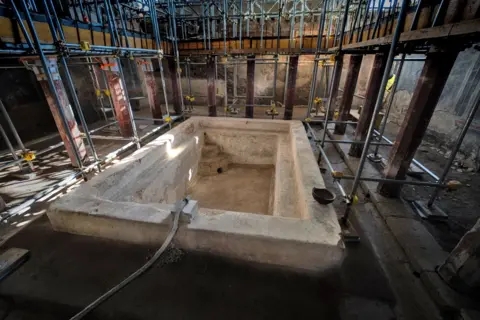
A Reflection of Elite Lifestyle
These opulent spaces draw parallels with scenes from the ancient Roman novel “The Satyricon”, where dinner parties were characterized by extravagant baths followed by feasts. The setting was not just about personal comfort but a demonstration of wealth and power. The remarkable bathing rituals showcased an elite lifestyle that interconnected leisure, culture, and politics. Guests were not only treated to the luxury of the bath but also to culinary delights—fishes, game, and exquisite desserts, all served amidst performances by musicians and dancers, further enforcing the host's status.

Discovering Hidden Stories
Although the volcanic eruption preserved the city in time, the layers of ash also concealed the complex social dynamics that flourished within Pompeii. As more excavations reveal hidden treasures like bakeries, laundry shops, and even the remains of individuals caught in the eruption, we continuously gain insight into daily life. This discovery not only adds to our understanding of how the wealthy lived, but also enhances our appreciation for the interconnectedness of personal, political, and social spheres in Roman life.
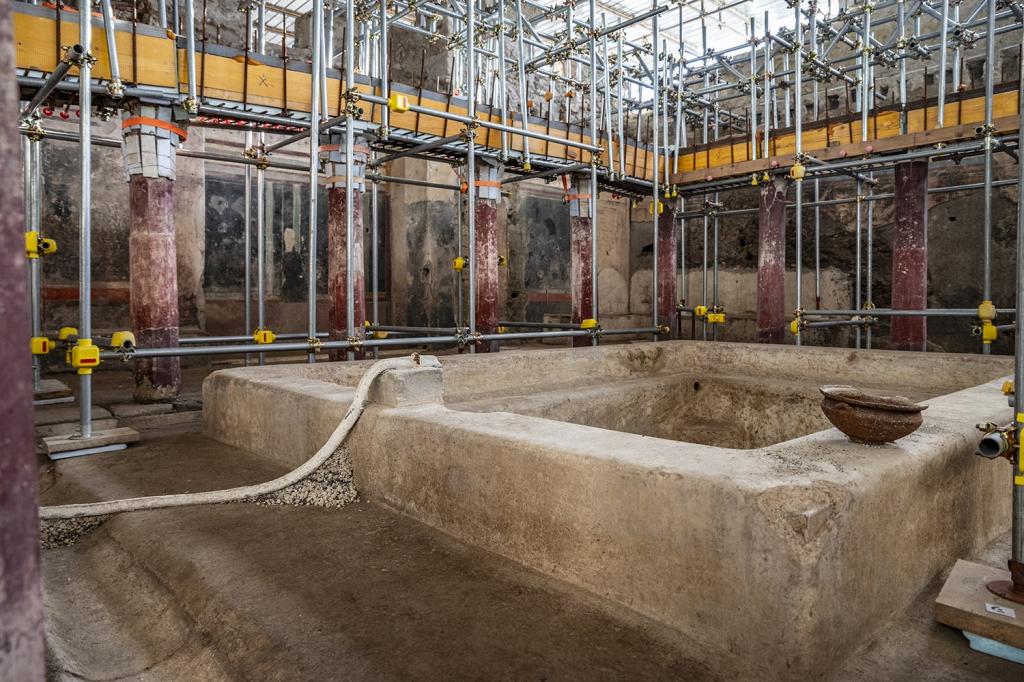
The remarkable findings from the excavation at Pompeii further illuminate the history of this ancient city and encourage us to reflect on how communal spaces cultivated relationships and fostered cultural expression. By examining these luxurious bathhouses, we uncover the enduring legacies of the Roman elite—revealing how their lives were a complex tapestry of art, culture, and politics that resonates with our understanding of social interaction even today.
